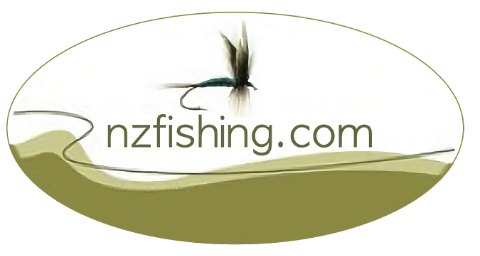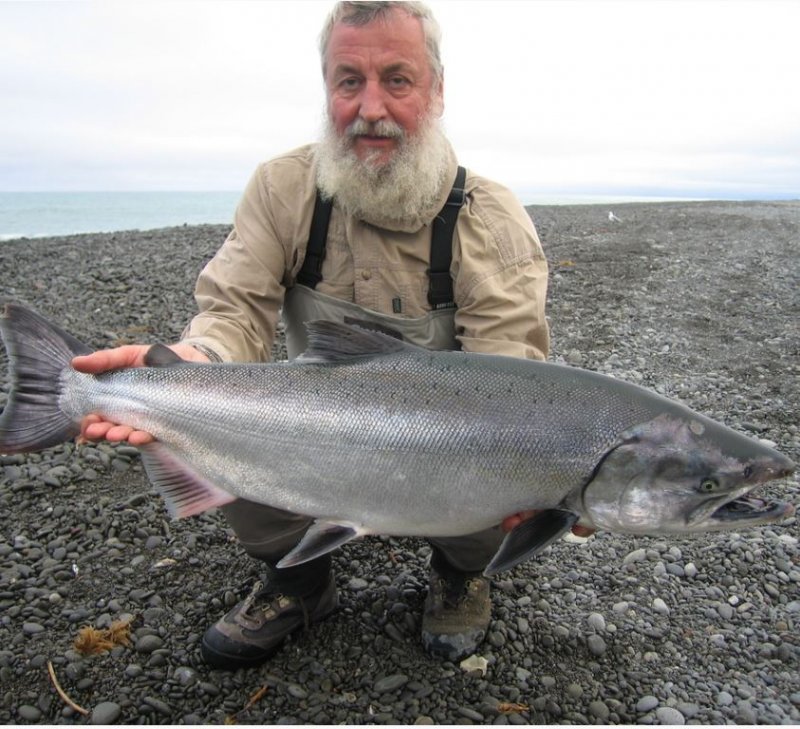| Fish type |
Brown trout, salmon |
| Situation |
The Hurunui River upper reaches are split into two branches: the North Branch which is fed from Lake Sumner, and the South Branch. The two branches join to form the main river south-east of Lake Sumner. The river flows through a succession of short, attractive gorges and wends in an easterly direction, through scenic, hilly countryside and the Balmoral Forest, before heading for the coast just south of Cheviot.
The Hurunui is around 130km north of Christchurch. It passes through the town of Hurunui on the south side of Balmoral Forest. |
| Maps |
Upper Hurunui access map
Lower Hurunui access map
|
| Check conditions |
View the MetService weather forecast.
View the rainfall.
View the river flow.
The Hurunui generally becomes fishable once it drops below 35 cumecs, though trout anglers fishing in the upper reaches like to see it at 25 cumecs or less to allow better access along the banks. |
| Headwaters (North Branch headwaters above Lake Sumner) |
Description
A location popular with fit anglers with a full day's fishing available. The river is moderate in size, clear, shingly and flood-prone. On a bright day, the trout can be spotted and stalked; but they are easily spooked and will go into hiding for at least a day. The river can be waded and crossed safely in normal conditions. Note that a north west wind often blows strongly downstream.
Fish numbers and size
Some good-sized brown trout in a good population of fish.
Access
Off Lake Sumner Road, there is a 4WD track to the North Branch above Lake Sumner whch ends at a swing bridge. Note that you need to contact the Christchurch office of DOC for the combination of a gate lock to proceed past Loch Katrine. See the upper Hurunui access map. |
Upper reaches: North Branch
and the main river to the Mandamus confluence |
Description
Below Lake Sumner, the North Branch of the Hurunui is large and clear; it remains clear after a fresh. The upper reaches and tributaries are best fished when the river is low. The river flows over a rock and gravel bed, and the shoreline is mostly stony. The pools are deep and the runs expansive. The river here is not easy to fish as its dangerous to cross and tricky to wade. Long casts are required, mostly fishing blind. The prevailing north westerly wind blows downstream.
You can catch trout anywhere down to the gorge above the Mandamus confluence. The 10km downstream from Lake Sumner to above Maori Gorge (where the road first comes near the river) is one of the most productive reaches of trout fishing in New Zealand. There's a full day's fishing to be had in this stretch of water. Blind fishing the big pocket water of the North Branch below Lake Sumner is particularly effective.
Immediately above the confluence with the Mandamus, the Hurunui runs through a gorge whoch is practically unfishable due to the steep banks which make access very difficult.
Fish numbers and size
Excellent stock year-round, up to 3.5kg. More than 50 large fish per km.
Access
Access is off Lake Sumner Road which skirts the river for part of its length. From the Sisters Stream footbridge to Lake Sumner there is foot access only. You can walk down to the river’s edge at Surveyors Stream, where the road leaves the river.
See the upper Hurunui access map. |
| Upper reaches: South Branch |
Description
The South Branch offers good fishing upstream of the confluence with the North Branch but access through and above the gorge reaches is difficult. It is are best fished when the river is low. The South Branch is smaller and less stable than the North Branch and discolours after rain. The trout become wary in response to heavy angling pressure so fishing early in the season is recommended.
Fish numbers and size
High upstream near the Stony Hut there are 6 km of water holding a few good-sized fish. Please catch and release.
Access
There is access by foot from the confluence with the North Branch. All other access is through Esk Head Station and requires permission from the landowner. See the upper Hurunui access map. |
| Middle and lower reaches: Mandamus confluence to the mouth |
Salmon
This large, shingly and braided part of the river can be dirty and is most suited to spinning for salmon. The salmon season is mid January to mid March.
The best times to fish are as soon as the river clears after a fresh, when salmon run upriver. Look for deep water locations with a slow current. Salmon also congregate where the river flows into rocky outcrops or bluffs.
Trout
Populations of brown trout are present all year round, mainly in in deep holes and gorges. Look for pools with large rocks which provide cover for feeding trout. Early in the season some good browns can be caught under the willows. A run of sea-run fish in December can offer good sport.
Access
The Balmoral Bridge on SH7 provides the easiest access to both sides of the river. The lower reaches are accessed from roads leading off State Highway 1.
See the lower Hurunui access map. |
| The Hurunui mouth |
At the mouth
The best fishing tends to be in the surf when the river is low and salmon are congregating outside the mouth waiting for a flood before running the river. Wind and tides affect which side is best to surf cast from, but if in doubt head for the south side.
The best times to fish are generally on a low tide or early stages of the incoming tide. The first hour of daylight is great fishing on any tide.
The mouth gut
The river mouth gut is popular immediately after a fresh when the salmon tend to run into the river. The best time is during the top half of the incoming tide.
Tide tables
See the tide tables for Lyttleton at the LINZ website.
Fish numbers and size:
Very good numbers in season.
Access
Access to the mouth is from side roads off State Highway 1. |
| Salmon fishing methods |
Spin fishing is the most effective, though fly fishing is also popular.
At the river mouth: Use a medium-fast action rod of 2-2.5m in length, coupled with a fixed or free spool reel capable of holding 200m of 8-10kg line.
Up river: Lighter tackle such as a rod and reel with around 6-7kg line is recommended, with zed spinners of 10-22 grams fished right on the bottom. Target places where the current is slow and the water deep.
Fly fishing: Try streamer flies fished on sinking lines through the tails of pools or through slow flowing reaches. |
Trout fishing
methods |
Spinning is the best method when the river is discoloured and fly fishing when it’s low and clear enough to sight the fish.
Catch and release
Above Lake Sumner and in the South Branch (where there are fewer fish), please catch and release where possible.
Spinning
Cast into calm water at the top of pools using good-sinking spinners such as the Tasmanian Devil or Toby.
Fly fishing
To avoid spooking the trout, approach carefully, standing well back from the bank and spot them before casting. Use nymphs or large attractor dry flies fished upstream on a floating line |
| Recommended trout lures |
Nymphs: Use stonefly nymphs or small weighted nymphs such as tungsten beadheads: see Hare and Copper Gold Bead and Caddis Tungsten Brown.
Dry flies: Well-hackled large attractor dry flies such as a stimulator
Spinners: Tasmanian Devil or Toby.
Spinners: Tasmanian Devil or Toby.
|
| High country lakes |
The Hurunui high country lakes are:
- Lake Sumner
- Loch Katrine
- Lake Mason
- Lake Taylor
- Lake Sheppard |
| Tributaries |
Tributaries of the Hurunui River include:
- Pahau River
- Waitohi River
- Mandamus River
- Pahau River
- Waikiri River |
| Biosecurity requirements |
| Biosecurity |
Because of the presence of the invasive alga didymo in these waters, anglers must clean their fishing gear including waders and boots, especially when moving between rivers. See Didymo Biosecurity Alert
for details. |
| Regulations (1) |
| Applicable to the Hurunui River |
Backcountry fisheries
Two sections of the Hurunui River are classified as Backcountry Fisheriers. They are:
- Upstream of grid reference BU22 3088 7229 (500m upstream of Lake Sumner, marked with sign)
- The South Branch upstream of Esk River confluence.
To fish either of these sections requires anglers to have a full years licence and to obtain a backcountry licence. |
| Region |
North Canterbury regulations |
| Season |
1 Oct-30 Apr |
| Methods |
Artificial fly, spinner |
| Bag limit |
Trout: 1
Salmon: 0 |
| Size limit (cm) |
Minimum 30 cm
Max 40cm |
| Regulations (2) |
| Applicable to |
Hurunui River upstream of Lake Sumner |
| Region |
North Canterbury regulations |
| Season |
1 Oct - 30 Apr |
| Methods |
Artificial fly, spinner |
| Bag limit |
Trout: 1
Salmon: 0 |
| Size limit (cm) |
Minimum 30 cm
Maximum 40 cm |
| Regulations (3) |
| Applicable to |
Hurunui River between Lake Sumner and South Branch confluence |
| Region |
North Canterbury regulations |
| Season |
All year |
| Methods |
Artificial fly, spinner |
| Bag limit |
Total: 2
Salmon: 0 |
| Size limit (cm) |
Minimum 3o cm |
| Regulations (4) |
| Applicable to |
Hurunui River below the South Branch confluence |
| Region |
North Canterbury regulations |
| Season |
Trout: All year
Salmon: 1 Oct - 30 April |
| Methods |
Artificial fly, spinner.
Bait fishing for trout only. |
| Bag limit |
Trout: 2
Salmon: 1 |
| Size limit (cm) |
Minimum 30 cm
Max 40cm |
| Regulations (5) |
| Applicable to |
South Branch downstream of Esk River confluence |
| Region |
North Canterbury regulations |
| Season |
1 Oct - 30 April |
| Methods |
Artificial fly, spinner. |
| Bag limit |
Trout: 1
Salmon: 0 |
| Size limit (cm) |
Minimum 30 cm
Max 40cm |
|



